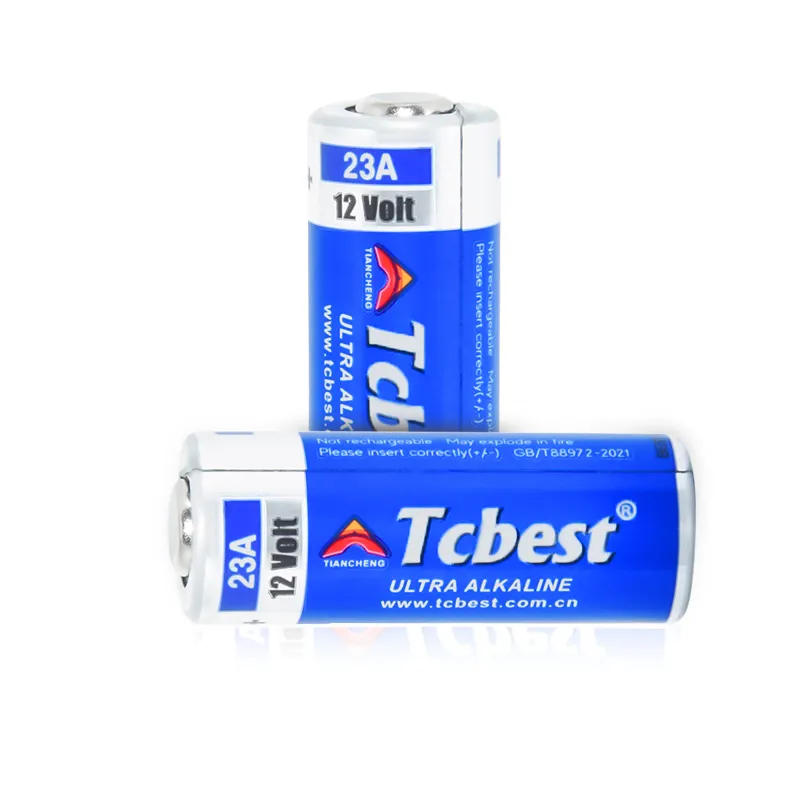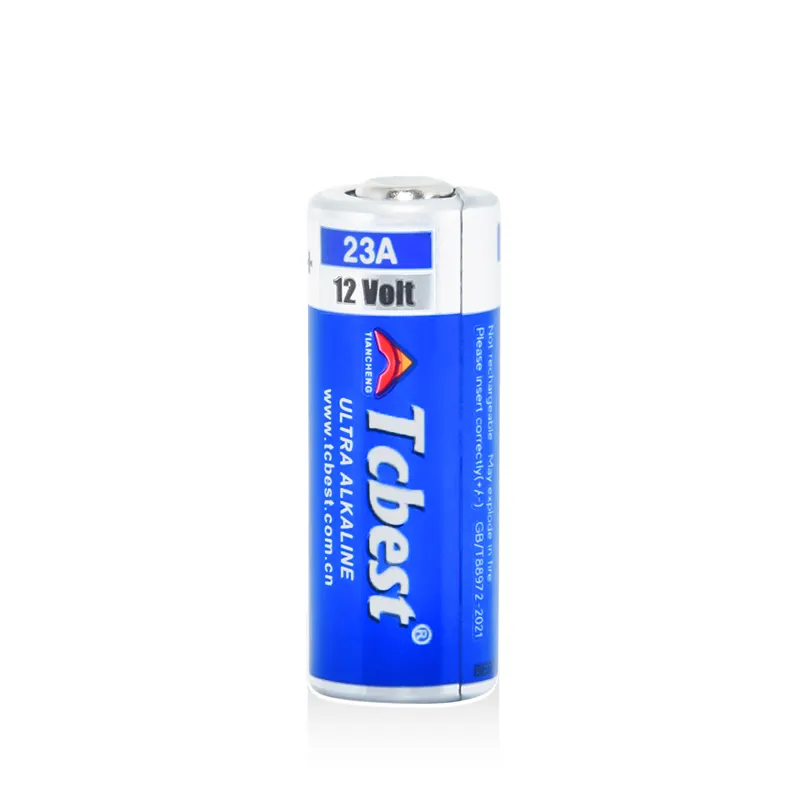Powering Everyday Life with Confidence
In today's fast-paced world, we rely on an ever-growing array of electronic devices to make our lives more convenient, productive, and enjoyable. From remote controls and wall clocks to digital cameras and handheld gaming consoles, these gadgets require a reliable power source to function efficiently. Alkaline batteries have long been the go-to solution for many consumers, offering a dependable and long-lasting energy option. Understanding how to choose the right alkaline battery for your device is essential for maximizing performance and value.
Understanding Alkaline Battery Basics
What Makes Alkaline Batteries Unique
Alkaline batteries are primary batteries that derive their energy from the chemical reaction between zinc and manganese dioxide. They are known for their high energy density, longer shelf life, and leak-resistant construction. Alkaline batteries outperform zinc-carbon batteries and are suitable for both low-drain and moderate-drain devices, making them a popular choice for a wide range of electronics.
Common Sizes and Their Uses
Alkaline batteries come in a variety of sizes, including AA, AAA, C, D, and 9V. Each size serves specific types of devices. For instance, AA and AAA batteries are commonly used in TV remotes, wireless mice, and toys, while C and D batteries are typically found in flashlights and portable radios. The 9V battery is often used in smoke detectors and guitar pedals. Choosing the correct size ensures optimal compatibility and performance.
Factors to Consider When Choosing Alkaline Batteries
Power Requirements of Your Device
One of the first things to consider when selecting an alkaline battery is the power demand of your gadget. High-drain devices like digital cameras or handheld gaming consoles require batteries that can deliver consistent voltage over time. In contrast, low-drain devices such as wall clocks or remote controls can run efficiently on standard alkaline batteries. Matching the battery's output with your device's requirements helps prevent malfunctions and extends the life of both the battery and the device.
Battery Longevity and Shelf Life
Another important aspect is how long the battery can last, both in storage and in use. Alkaline batteries generally have a shelf life of 5 to 10 years, depending on the brand and storage conditions. For devices that are used intermittently or kept in emergency kits, battery longevity becomes a crucial factor. Selecting batteries with extended shelf life ensures that they are ready to perform when needed.
Matching Battery Features with Gadget Types
High-Performance Needs
Devices that require frequent use or operate under high power consumption benefit from premium alkaline batteries that offer superior performance and durability. These batteries are engineered to provide a steady current and are often equipped with features such as anti-leak protection and temperature resistance. For users of high-tech devices, choosing a high-performance alkaline battery can make a noticeable difference in usability and reliability.
Everyday Household Devices
For typical household electronics such as TV remotes, clocks, and LED lights, standard alkaline batteries are more than sufficient. These devices do not consume much power, and replacing batteries periodically is a manageable task. Using standard alkaline batteries for these gadgets ensures cost-effectiveness without compromising functionality.

Comparing Alkaline Batteries with Other Types
Alkaline vs. Rechargeable Batteries
While rechargeable batteries offer the advantage of reusability, alkaline batteries still hold a strong position due to their convenience and immediate usability. There is no need for charging infrastructure or wait time; alkaline batteries can be used straight out of the package. They also tend to perform better in low-drain devices where rechargeables might lose power quickly due to self-discharge.
Alkaline vs. Lithium Batteries
Lithium batteries generally offer higher energy density and operate better in extreme temperatures. However, they are often more expensive and not always necessary for everyday devices. Alkaline batteries provide a balanced solution, offering sufficient power at a reasonable price point for most household electronics. Choosing between the two depends on the specific use case and budget considerations.
Environmental and Safety Considerations
Disposal and Recycling
Proper disposal of alkaline batteries is essential to minimize environmental impact. While many areas allow alkaline batteries to be disposed of in household trash, recycling them is a more sustainable option. Several retail and community recycling programs accept alkaline batteries, turning waste into reusable materials and helping reduce landfill load.
Safe Usage Practices
To ensure safe usage, always insert alkaline batteries according to the indicated polarity and avoid mixing old and new batteries. Store them in a cool, dry place and keep them out of reach of children. Following safety guidelines not only protects your devices but also ensures user safety.
Tips for Maximizing Alkaline Battery Performance
Proper Storage Conditions
Alkaline batteries perform best when stored in a cool and dry environment. Exposure to heat and humidity can accelerate chemical degradation, shortening their lifespan. Keeping batteries in their original packaging until use also helps preserve their charge and prevents short-circuiting.
Monitoring Expiry Dates
Most alkaline batteries come with an expiration date printed on the package or battery casing. Using batteries before their expiry ensures peak performance and reduces the risk of leakage. Regularly checking the expiration date can help manage inventory and prevent waste.
Choosing Alkaline Batteries for Specific Scenarios
Travel and Emergency Use
For travel or emergency kits, reliability is paramount. Opt for alkaline batteries known for their extended shelf life and robust performance across temperature ranges. Having a backup supply of these batteries can provide peace of mind during unexpected situations or power outages.
Children’s Toys and Educational Tools
Children’s toys often feature lights, sounds, and moving parts, making them moderately power-hungry. Choosing durable alkaline batteries ensures prolonged playtime and less frequent replacements. Additionally, child-safe packaging and leak-proof designs add an extra layer of security.
Innovation and Trends in Alkaline Battery Technology
Longer-Lasting Formulas
Recent advancements in alkaline battery chemistry have led to extended life cycles and improved energy output. Brands are investing in research to optimize chemical reactions and internal construction, delivering products that meet modern energy demands more efficiently.
Smart Packaging and Indicators
Some modern alkaline batteries come with built-in power indicators or smart packaging that helps users assess remaining energy. These innovations make it easier to track usage and plan replacements without guesswork. Embracing such features can lead to more informed usage habits.
Evaluating Cost-Effectiveness
Price vs. Performance Ratio
While it’s tempting to choose the cheapest option available, considering the price-performance ratio is crucial. High-quality alkaline batteries may have a slightly higher upfront cost but provide longer-lasting power and better device protection. Over time, this results in fewer replacements and lower overall costs.
Bulk Buying for Convenience
Purchasing alkaline batteries in bulk offers both convenience and cost savings. Whether for office use, family households, or educational settings, buying in larger quantities reduces the frequency of purchases and ensures you always have batteries on hand.
Selecting the Right Supplier or Brand
Reliability and Reputation
When choosing alkaline batteries, consider the reputation and reliability of the manufacturer. Trusted brands often adhere to strict quality control standards and offer warranties or satisfaction guarantees. This reliability translates into better performance and peace of mind for consumers.
Availability and Support
Another factor to consider is the availability of the product and after-sales support. Brands with wide distribution networks and customer service infrastructure make it easier to find replacements and get assistance when needed. Accessibility plays a big role in the overall user experience.
FAQ
How do I know which alkaline battery size my device needs?
Check the device's manual or battery compartment markings. Most gadgets clearly indicate the required battery size such as AA, AAA, C, D, or 9V.
Can I mix alkaline batteries from different brands?
It’s not recommended. Mixing brands can cause inconsistent voltage delivery and increase the risk of leakage or reduced performance.
Are alkaline batteries safe to take on an airplane?
Yes, alkaline batteries are generally safe for air travel. It’s advisable to keep them in their original packaging and carry them in your hand luggage.
What should I do if an alkaline battery leaks inside a device?
Turn off the device immediately and use protective gloves to remove the batteries. Clean the compartment with a mixture of baking soda and water to neutralize the acid, and allow it to dry before inserting new batteries.
Table of Contents
- Powering Everyday Life with Confidence
- Understanding Alkaline Battery Basics
- Factors to Consider When Choosing Alkaline Batteries
- Matching Battery Features with Gadget Types
- Comparing Alkaline Batteries with Other Types
- Environmental and Safety Considerations
- Tips for Maximizing Alkaline Battery Performance
- Choosing Alkaline Batteries for Specific Scenarios
- Innovation and Trends in Alkaline Battery Technology
- Evaluating Cost-Effectiveness
- Selecting the Right Supplier or Brand
- FAQ

